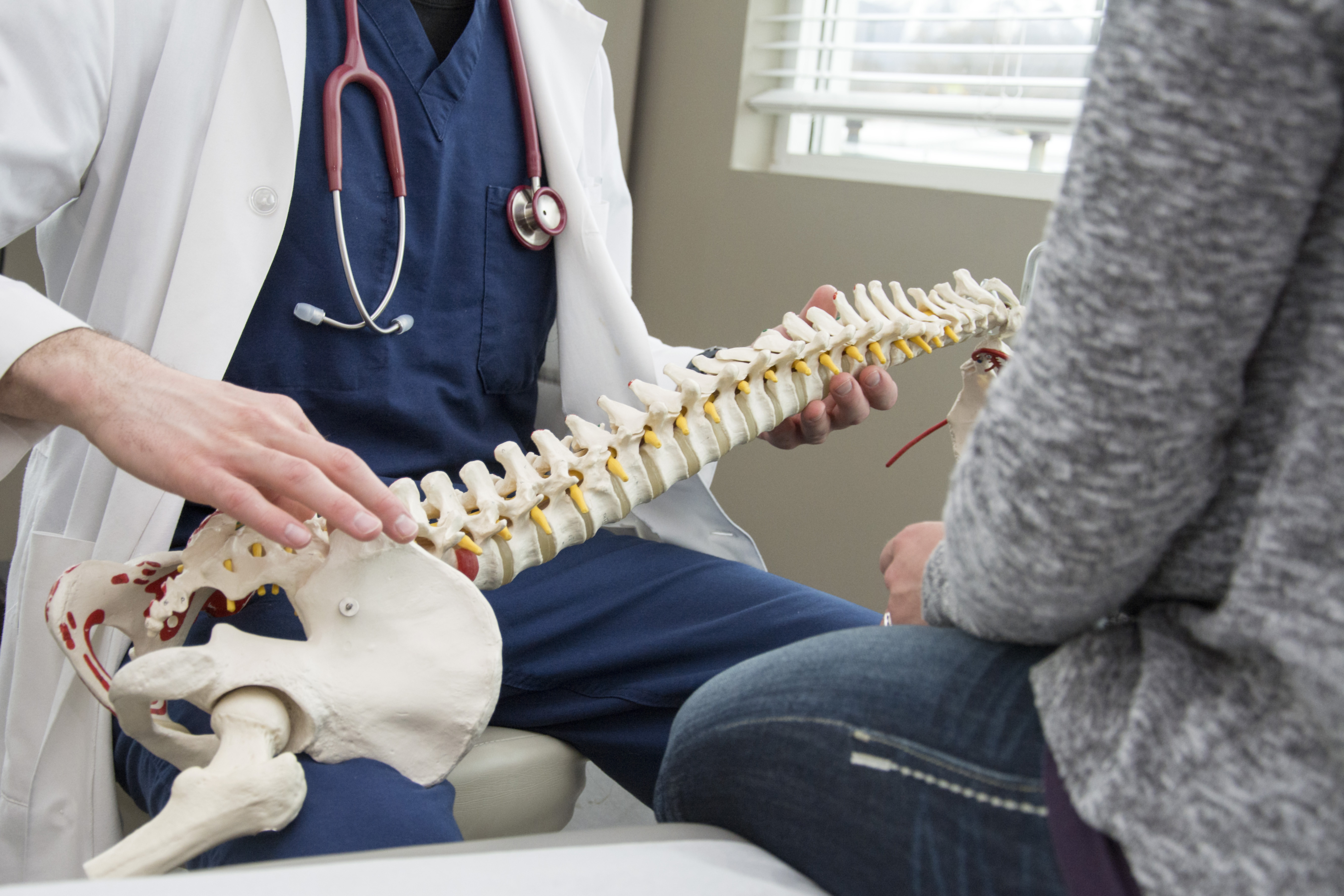Everything You Need to Know About Spinal Decompression Therapy
Pain.
It serves a purpose.
It’s an internal warning device triggering avoidance reactions. This can prevent further serious injury. It is also a signal that something is wrong with a particular part of your body and that you need to get it checked out.
But when it persists, when pain continues even after the initial cause is fixed, it becomes problematic.
This is called chronic pain. And for many people who suffer chronic back pain, it is not pleasant to live with.
A relatively new set of therapies is advancing in the [ ] of pain associated with conditions involving the spine. It’s called spinal decompression therapy, and it’s revolutionizing how doctors treat back pain.
If you’re suffering from back pain, keep reading. This may be exactly what you’ve been looking for.
Relief.
Why is Back Pain So Common?
The American Chiropractic Association (ACA) says that pain in the lower back is the number one cause of disability worldwide. In fact, the ACA estimates that at any given time, 31 million Americans experience lower back pain.
According to the American Spinal Decompression Association (ASDA), some of the most common causes of back pain include:
- Disc herniation
- Bulging discs
- Back injuries involving muscle, joint, or ligament strains
- Severe and prolonged muscle contractions and spasms
- Degenerative disc disease
- Vertebral misalignment
- Displacement or slippage of vertebrae called Spondylolisthesis
- Spinal arthritis often referred to as osteoarthritis
- Spinal stenosis: nerve pressure due to narrowing of the spinal canal
- Complications due to osteoporosis, such as vertebral fractures
- Spinal curvatures from inherited conditions such as scoliosis.
Lately, more pain sufferers are turning to spinal decompression therapy for relief. This procedure is performed two ways: surgically and nonsurgically.
Wondering if it’s right for you? Here we break both down into simple terms to help you decide.
Nonsurgical Spinal Decompression
A safe, nonsurgical option using relatively new technology.
Symptoms Treated
The nonsurgical approach to spinal decompression treats neck and low back pain issues. Some of the more common uses include:
- relieving spinal nerve pressure caused by herniated discs
- pain relief for persistent pain due to degenerative disc disease
- treatment for people diagnosed with posterior facet syndrome (wearing of the spinal joints)
- back, neck, or sciatica pain — pain, weakness, or tingling sensations extending down the legs
Procedures Used
The treatment uses FDA approved equipment and involves gentle manipulation of the spine. A motorized traction table, similar to those used by chiropractors and osteopaths, performs the movements.
A padded harness, attached to the lower part of the table, is strapped to a patient’s hips. The upper portion of the table stays fixed while the lower part pulls the harness, gently stretching the spine.
The decompression device is computer controlled. The doctor programs and guides the device. The machine applies the necessary forces in a precise and gradual series of stretches and decompressions.
A typical session averages 30-45 minutes. The recommended course of therapy for full effect is 20 to 30 sessions over a 4 to 6 week period.
Expected Outcome
As the word decompression implies, this treatment helps release pressure from the disks of the spine. The gel-like cushions are able to retract.
The result is twofold:
- Herniated or bulging discs no longer put pressure on spinal cord nerves, which is often a major cause of back pain.
- Discs that are no longer compressed can rehydrate, reoxygenate, and pull in nutrient-rich fluids. This strengthens and allows healing of the discs.
Many patients experience relief after just a few sessions. But to achieve the full benefit the entire course of treatment is important to complete.
Researchers agree that more studies and data are needed to evaluate the overall safety and effectiveness of nonsurgical spinal decompression. But the future of this revolutionary therapy is promising.
As with any treatment of this nature, there are certain conditions where the therapy is not recommended. This includes women who are pregnant, patients with fractures or tumors in the spine, people with spinal implants or advanced osteoporosis.
Surgical Spinal Decompression
Depending on the cause of back pain, a surgical procedure may be the only option to relieve spinal pressure. It often becomes necessary when other alternative measures don’t work.
Symptoms Treated
Surgery may help relieve symptoms such as:
- Pain in the arms, legs or back from spinal cord pressure
- Numbness or tingling sensations in the extremities
- Sciatica
- Sacroiliac joint disorders
- Compressed or pinched nerve roots
- Bulging or ruptured discs
- Discogenic back pain due to radial tears in the annulus (tough outer layer of discs)
- Osteophytes or bone spurs
- Pain and discomfort associated with degenerative disc disease.
These symptoms develop from a wide variety of causes. These include, but are not limited to, injury, poor posture, degenerative conditions, and aging.
Procedures Used
There are several common surgeries used for spinal decompression. These include:
Discectomy
Involves the removal of a portion of a herniated or ruptured disc to relieve nerve pressure
Laminectomy
A section of the bony arch of a vertebra is removed, increasing the spinal canal diameter. This procedure is typically performed on patients with spinal stenosis.
Foraminotomy
Also called laser spine surgery. This procedure removes bone spurs, disk herniations, or synovial cysts causing pinched nerves.
Osteophyte Removal
Extraction of excess bone growth or bone spurs. Both commonly develop when the spine becomes weakened due to degenerative disease or aging.
Corpectomy
A complex operation resulting in the complete removal of damaged discs as well as the bony vertebrae. The removed portions are often replaced with bone grafts, held together with titanium plates and screws.
Expected Outcome
Many of the above surgeries can be performed as minimally invasive procedures. In that case, recovery time is quicker than it is with surgery. Patients are often released the same day.
As with nonsurgical methods, the overall outcome of many of these procedures has shown to be effective for:
- pain relief
- increased mobility
- return to normal function and abilities.
Ready for Relief?
If you’re tired of living with constant pain, it might be time to see if you’re a candidate for spinal decompression therapy.
We’ve created a simple checklist to help you decide. Simply read and answer the questions. If you answer “yes” to any of the statements, we offer a courtesy MRI review to help you decide your next steps.
Freedom from pain may be just a click away.




